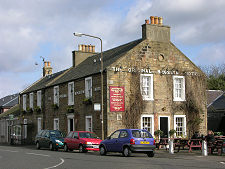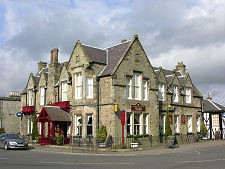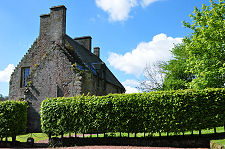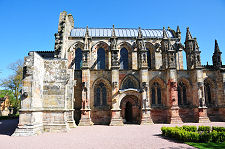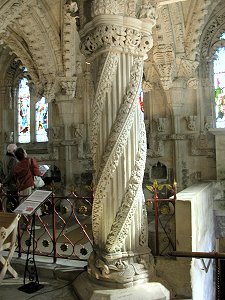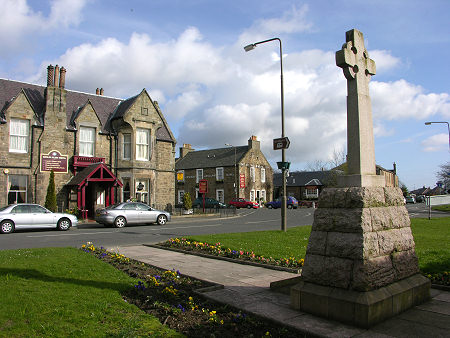 War Memorial |
Roslin, often historically called Rosslyn, is an attractive village to the east of the Pentland Hills and only six miles south of the centre of Edinburgh. In its current form it grew in the 1800s as a mining village. The surrounding area was home to a number of pits until the demise of deep mining in Midlothian in the 1960s.
Roslin is a name known worldwide for two totally different reasons: for being home to some of the world's most cutting edge biological science, and for being home to - perhaps - the last resting place of the Holy Grail.
To the immediate north of the village is the Roslin Institute, where the birth of Dolly the Sheep in 1996 marked a breakthrough in the science of cloning. And the Holy Grail? Well this is one of many legends that have long surrounded Rosslyn Chapel, immediately to the south of the village on the edge of Roslin Glen. The Chapel was always popular, but has become still more so since featuring in the book (and later the film of the book) The Da Vinci Code.
Is Rosslyn Chapel the home of the Holy Grail? Does it prove the discovery of North America centuries before Columbus? Does its intricate decoration contain the code that unlocks the ultimate answer to life, the universe, and everything? Those are questions (like the question "Does the Loch Ness Monster exist?") whose lack of resolution is ultimately very good for the health of the Scottish economy.
The origins of Roslin lie in Roslin Glen, where the ruins of Rosslyn Castle remain perched, well hidden and little known, only a couple of hundred yards south of Rosslyn Chapel on top of a steep sided promontory sticking out into the River North Esk.
Parts of the castle date back to 1304, and there was a settlement serving it at least as far back as the 1500s. Over the years, however, the village that became Roslin moved up the hill towards its current open site, and nothing remains of the 1500s village further down the slope into the glen.
The castle also explains the presence of Rosslyn Chapel, which was built from 1446 by the castle residents, the St Clair family.
Roslin and its surroundings have changed dramatically over the years: more than once. At the turn of the 1800s Sir Walter Scott noted: A morning of leisure can scarcely be anywhere more delightfully spent than in the woods of Rosslyn.
Yet by 1827 a visitor remarked: Amidst the castle ruins a modern mansion has been reared: yet in every direction around, the scenery is invested with all the disgusting attributes of a coal-country, overhung by the stifling smoke arising from the innumerable steam engines of the neighbourhood. Today's Roslin would be much more recognisable to Scott than to the 1827 visitor.
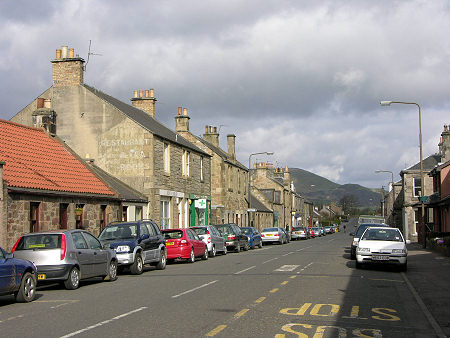 Main Street, Roslin, with the Pentland Hills in the Background |
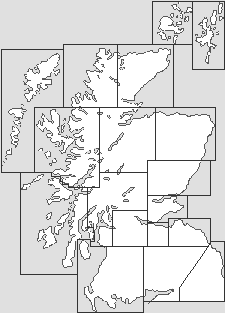
|
|
|
Visitor InformationView Location on MapWhat3Words Location: ///jumbo.worth.tutored |
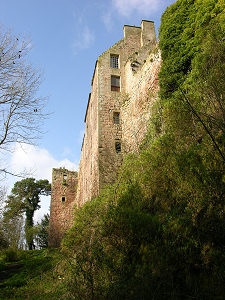 Rosslyn Castle |
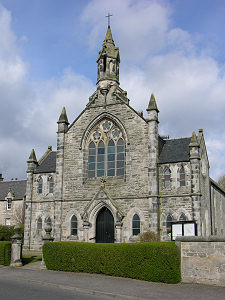 Roslin Parish Church |
